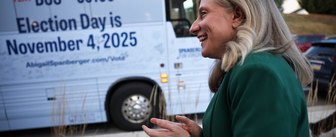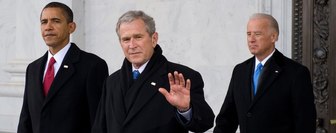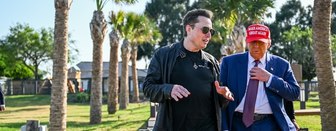Republican challenger Mitt Romney gets a majority of the votes of likely voters over Democratic President Barack Obama in Tennessee, 52% Romney to 43% Obama, in a YouGov poll of 484 likely voters from the Volunteer state (recontacted from an initial September poll).
| In Tennessee (Oct 4-11): |
|---|
Tennessee’s likely voters are moderately partisan in their approach, with 86% of Democrats sticking with Obama, and 86% of Republicans voting for Romney. |
Romney has a strong lead among likely voters who are Independents, 57% Romney-35% Obama. |
Women in Tennessee slightly favor the challenger, 51% Romney-45% Obama, while men favor the challenger, 53%-41%. |
Romney leads in Middle Tennessee (59%-37%), East Tennessee (56%-37%) and the Nashville area (56%-40%), while Obama leads in the Memphis area and West Tennessee (62%-34%) |
The oldest likely voters in Tennessee age 65+ favor Romney over Obama (59% Romney-36% Obama), and Romney also leads among Tennessee’s Baby Boomers, but by a narrower 53%-42% margin. Obama leads among likely voters age 30-44, 55% Obama-38% Romney. |
Romney maintains a solid, albeit narrowing lead among Tennessee likely voters who are Independents, where Romney was leading 56%-28% in September with this key swing group, and Romney leads, 57%-35% among these same Independent likely voters today. |
| Net Change in Voter Intention (Likely Voters) |
|---|
| Total | Independents | |||
|---|---|---|---|---|
Sept 7-14 | Oct 4-11 | Sept 7-14 | Oct 4-11 | |
Barack Obama | 42% | 43% | 28% | 35% |
Mitt Romney | 50% | 52% | 56% | 57% |
Incumbent Republican Senator Bob Corker holds a 48%-27% lead over Democratic Senate challenger Mark Clayton.
In the race for U.S. Representative for their Congressional districts, 41% intend to vote for the Republican candidate for the House in their district, and 36% for the Democrat. The poll was conducted October 4-11.
Sampling method: Respondents were initially selected on September 7-14 from YouGov’s panel using sample matching. A random sample (stratified by age, gender, race, education, and region) was selected from the 2005–2007 American Community Study. Voter registration, turnout, religion, news interest, minor party identification, and non-placement on an ideology scale, were imputed from the 2008 Current Population Survey Registration and Voting supplement and the Pew Religion in American Life Survey. Matching respondents were selected from the YouGov panel, an opt-in Internet panel.
Respondents were recontacted on October 4-11 for the second wave of the YouGov poll. The percentage of likely voters who were successfully recontacted was 70.5%.
Weighting: The sample was weighted using propensity scores based on age, gender, race, education, news interest, voter registration, and non-placement on an ideology scale.
Number of respondents: 484 likely voters. Margin of error ±5.0% (adjusted for weighting).
Click here for September 7-14 results (registered voters).
Click here for October 4-11 results (likely voters).








